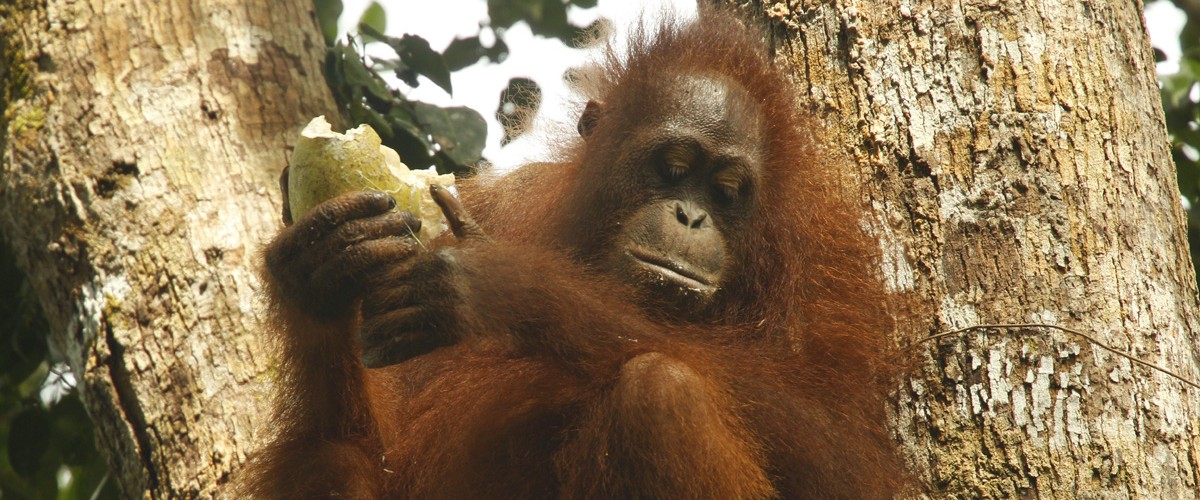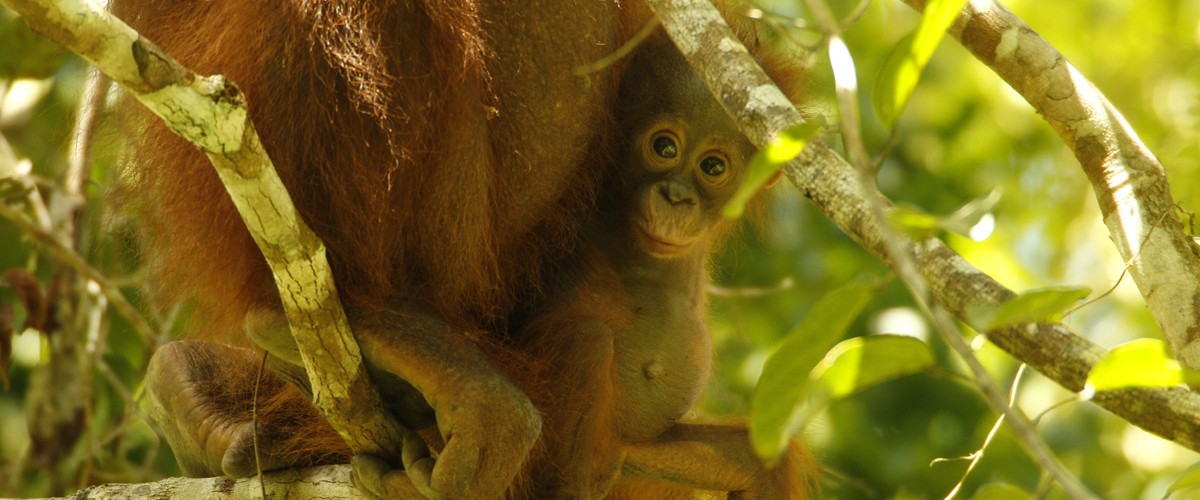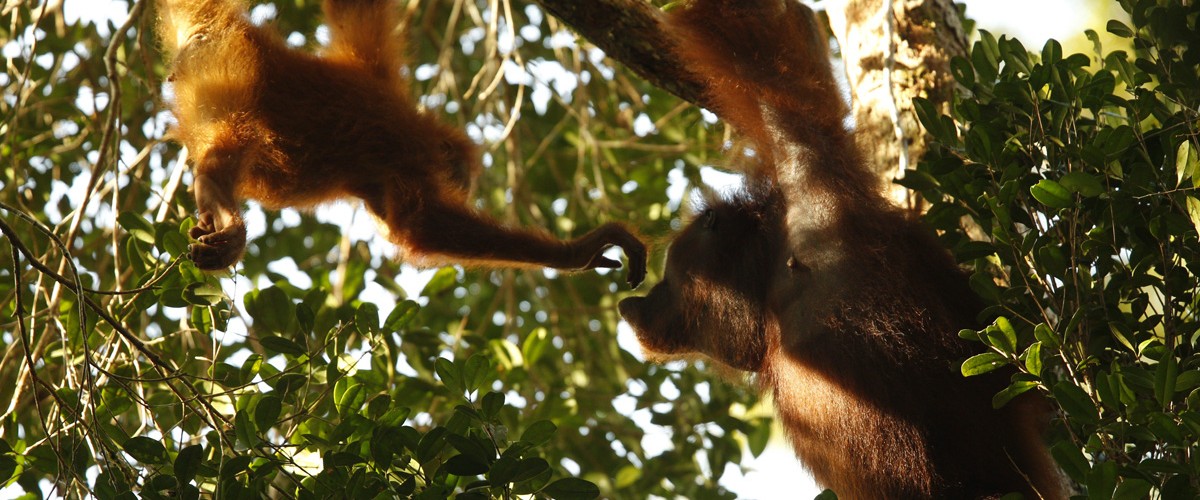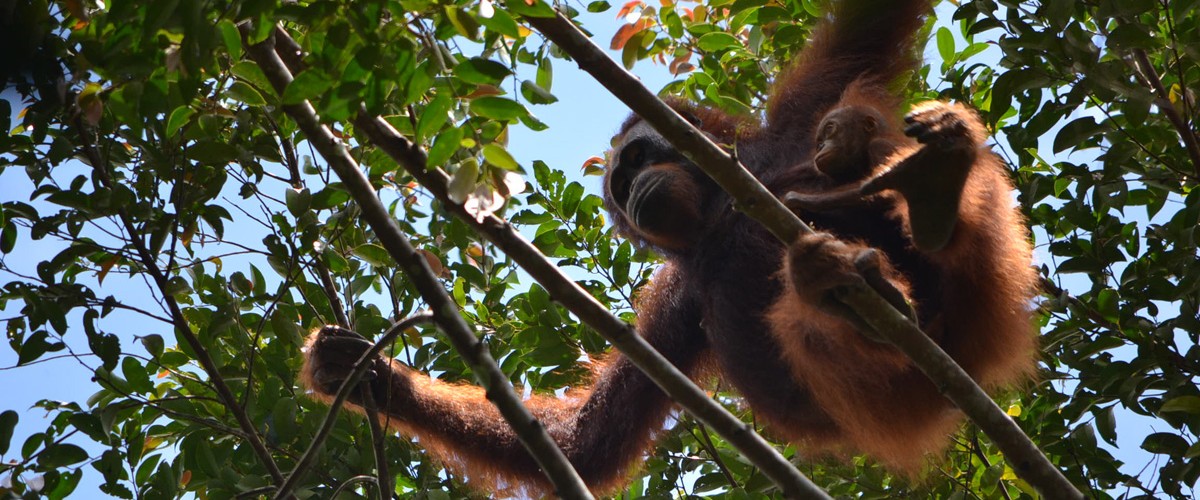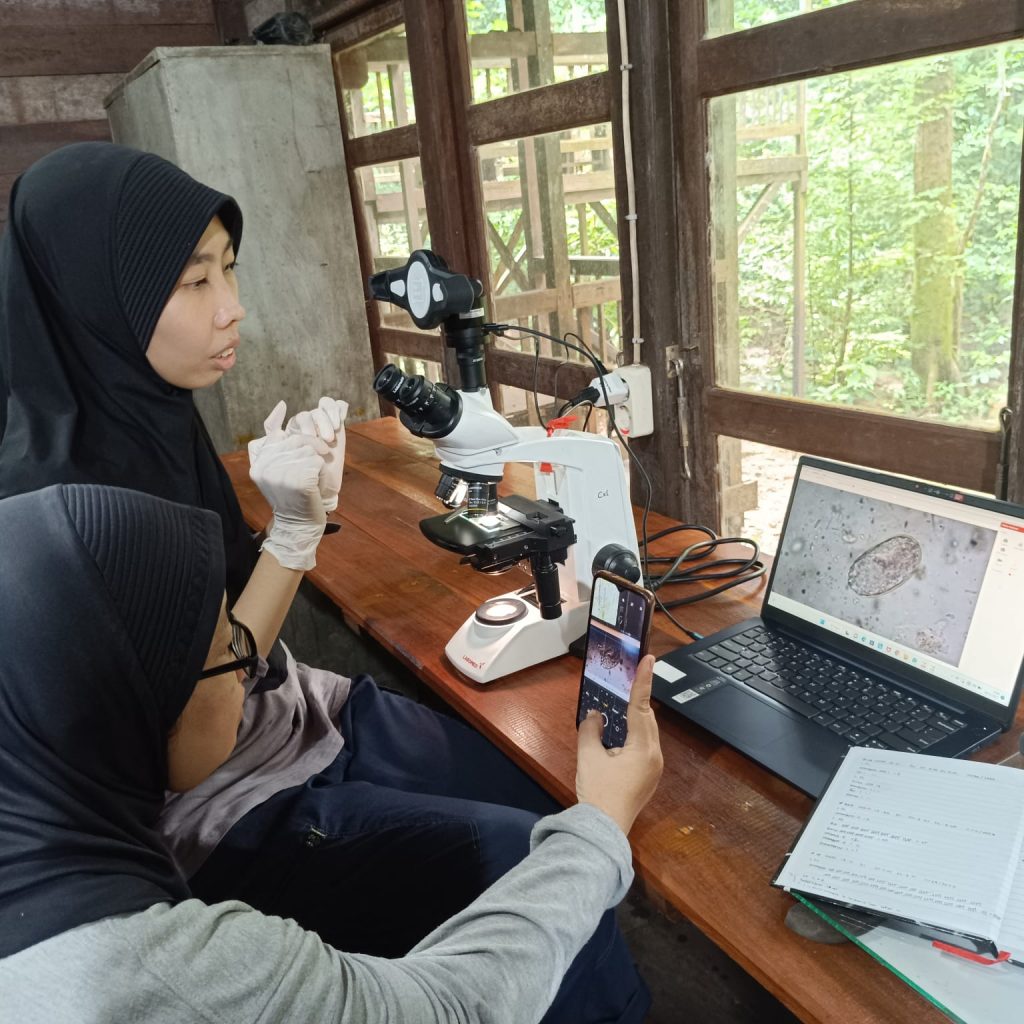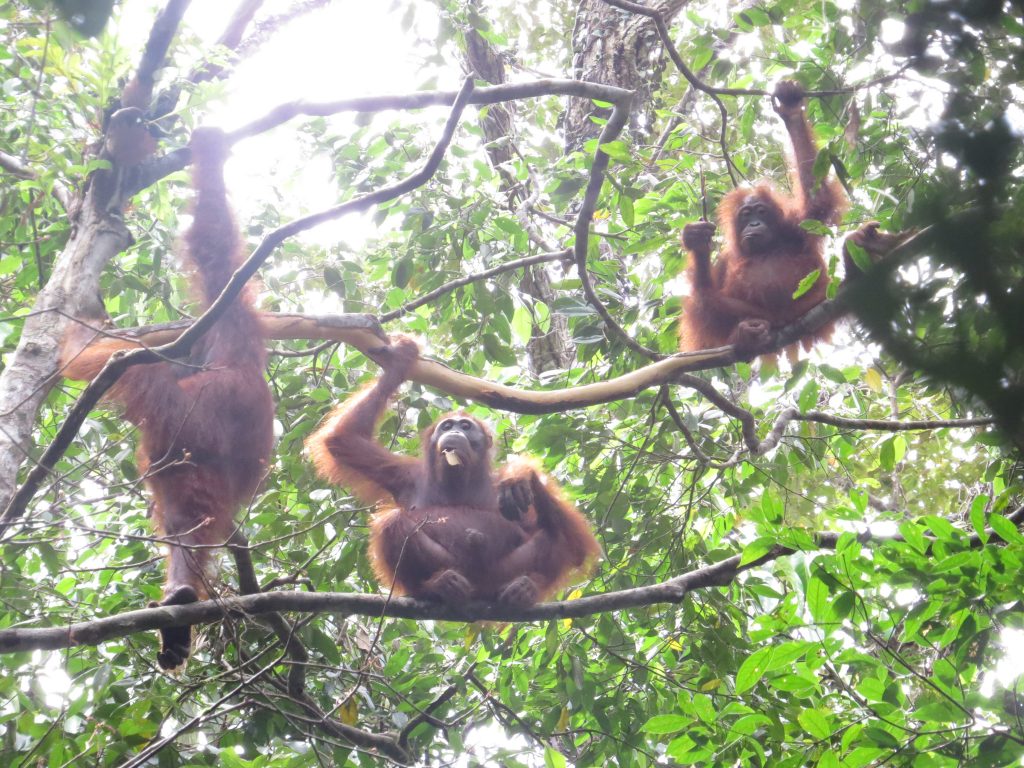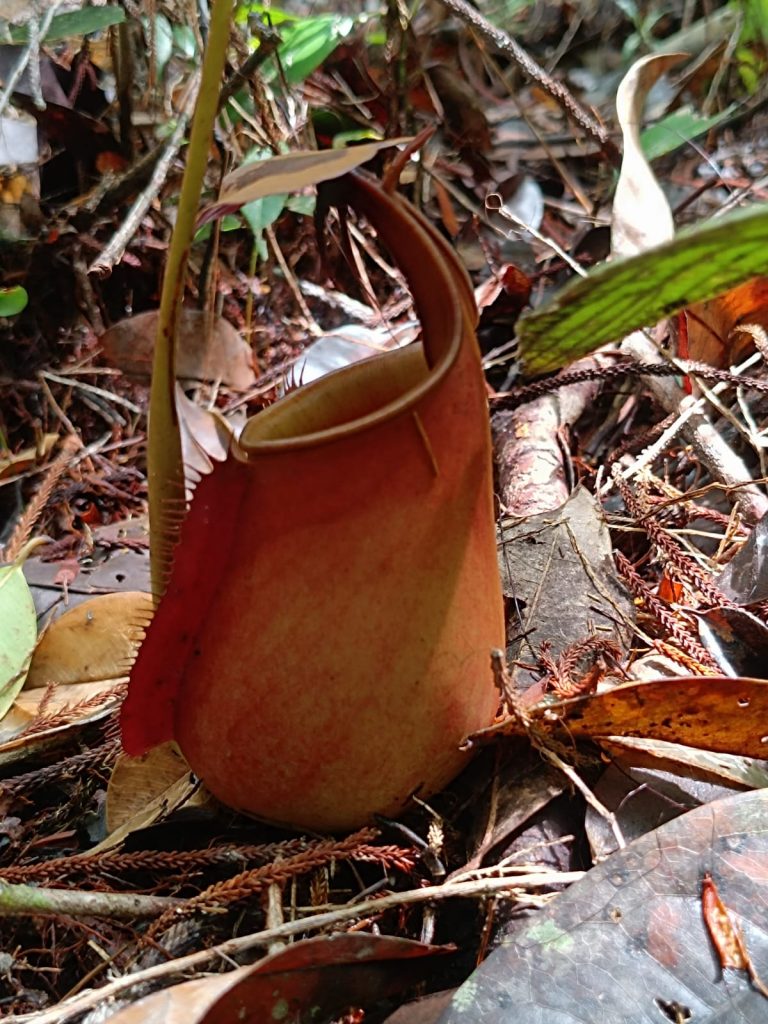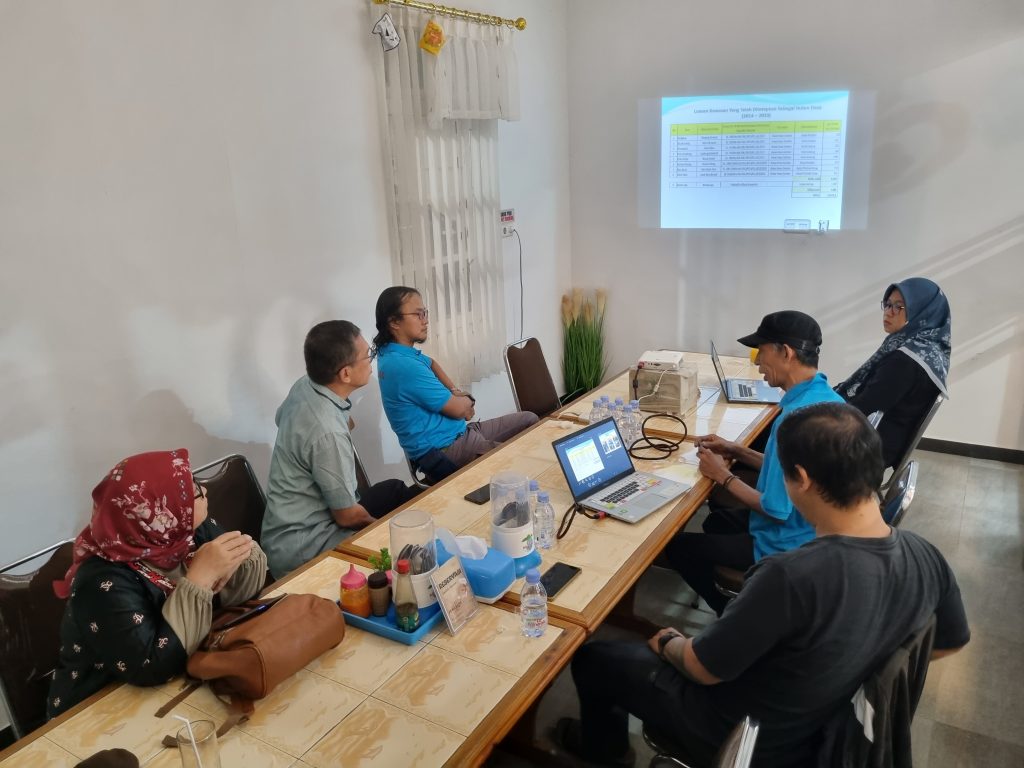By Dr. Tatang Mitra Setia, Professor of Biology at Universitas Nasional
On December 8-12, the Universitas Nasional team represented by me (Tatang Mitra Setia) and Astri Zulfa had the opportunity to visit the Cabang Panti Research Station and Rangkong Camp, where UNAS, in collaboration with Boston University, has an orangutan research program. The purpose of our visit was to monitor the development of research activities, and to gather information about research topics that can be investigated in the future. In addition, we also discussed the potential for cooperative activities that can be carried out with other programs at Yayasan Palung/GPOCP, with whom we also have an MoU.
On Friday, December 8 we began the journey to the Cabang Panti Research Station by boat up the river from Semanjak, Benawai Agung Village. This trip was beyond our expectation and quite unusual because it took 14 hours! The engine of the boat we were using broke down while in the middle of the trip (Lubuk Kuwali) and we could not continue. Eventually we were able to find land and get a phone signal so that we could contact staff from the Cabang Panti Research Station to provide assistance. We waited by the river until 10 pm when Rizal (the research manager), and 2 research assistants arrived with 1 more boat from the camp. After the engine was repaired, we were able to resume the journey in the middle of the night. Finally, we arrived at the Cabang Panti Research Station at 4:30 am, just as the field assistants were heading out to the orangutan nest. It was quite a tiring journey for us!
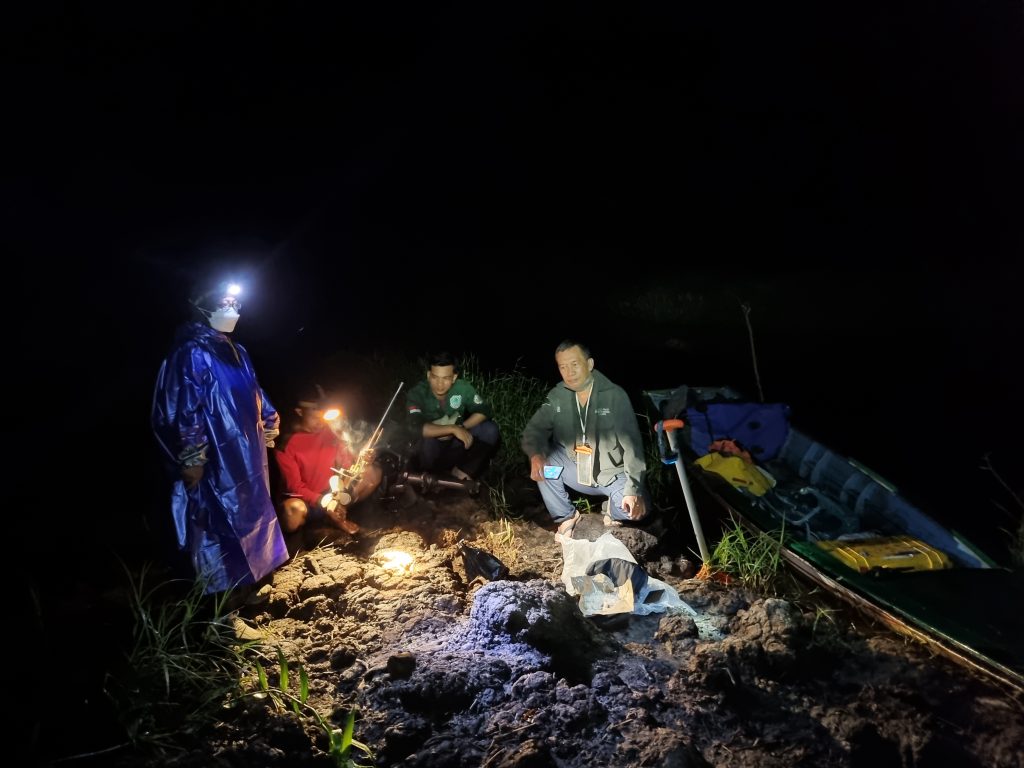
Even after this long journey, our fatigue was erased upon seeing the beauty of the forest and the unique biodiversity in the area of the Cabang Panti Research Station. The first day at the camp (9 Dec), we did not enter the forest because we needed some rest. However, we continued to explore the forest near the research camp building. In the morning, we heard the call of the gibbon, Hylobates albibarbis, not far from camp. Their beautiful songs are exchanged between groups and with each other. Then we saw a school of fish swimming back and forth in the river in front of the camp. Later we observed research activities carried out in the camp, such as the fruit analysis process carried out by Sumihadi and parasite examination by Ishma Fatiha.
On the second day (10 Dec), our activity began by seeing the process of searching for orangutans using thermal drones, conducted by Wahyu Susanto. This new method of searching for orangutans is very interesting because it can make it easier for researchers to search for orangutans from the air, in addition to continuing to search in the typical fashion by following transect lines. Then, we went to see the orangutan already being followed by the field assistants. We met orangutans on the ‘ES’ transect and saw that there were 3 orangutans who were having a “party”, namely Tunjuk, a male orangutan, and a female orangutan, Bibi, and her son Bayas, eating in a tree. We followed the orangutans for several hours and observed their different feeding techniques as they ate fruit, bark and termites and moved from one feeding tree to another.
The third day (11 Dec), we traveled through the forest path to the Rangkong Research Station – the new satellite camp that is closer to the border of the National Park. We were accompanied on our journey there by Mas Endro Setiawan, Head of the Cabang Panti Research Station, Gunung Palung National Park Office and Wahyu Susanto, the Director of the Research Program of Yayasan Palung, and Rizal, the Cabang Panti Research Manager. Even though we studied Biology at UNAS as students more than 30 years ago, there are still many new things to see, and new lessons to learn. When we were discussing research topics that could be developed in the future, suddenly Mas Endro, who is also a botanist, said, “What is the difference between single leaves and compound leaves?” Those of us who had also received lessons in plant morphology in college, were hesitant to answer. Then Mas Endro gave an explanation and showed us examples of single and compound leaves, and we gained a deeper understanding.
The journey to the Rangkong camp is about 7 km through the Rangkong research trails that have just been completed. On the same path, we passed through 2 different types of forests, namely alluvial and heath. When we were in the heath forest, we saw several pitcher plants and one of them was Nephents bicalcarta which, according to Mas Endro, is an endemic plant of Kalimantan (i.e. it is only found in Borneo). The pitcher bag has a unique characteristic, namely the presence of fangs (like vampires) in the sac. After 4 hours of travel, we finally arrived at the Rangkong camp and met Sabta (the Rangkong Coordinator) and the research assistants who had just returned from looking for orangutans.
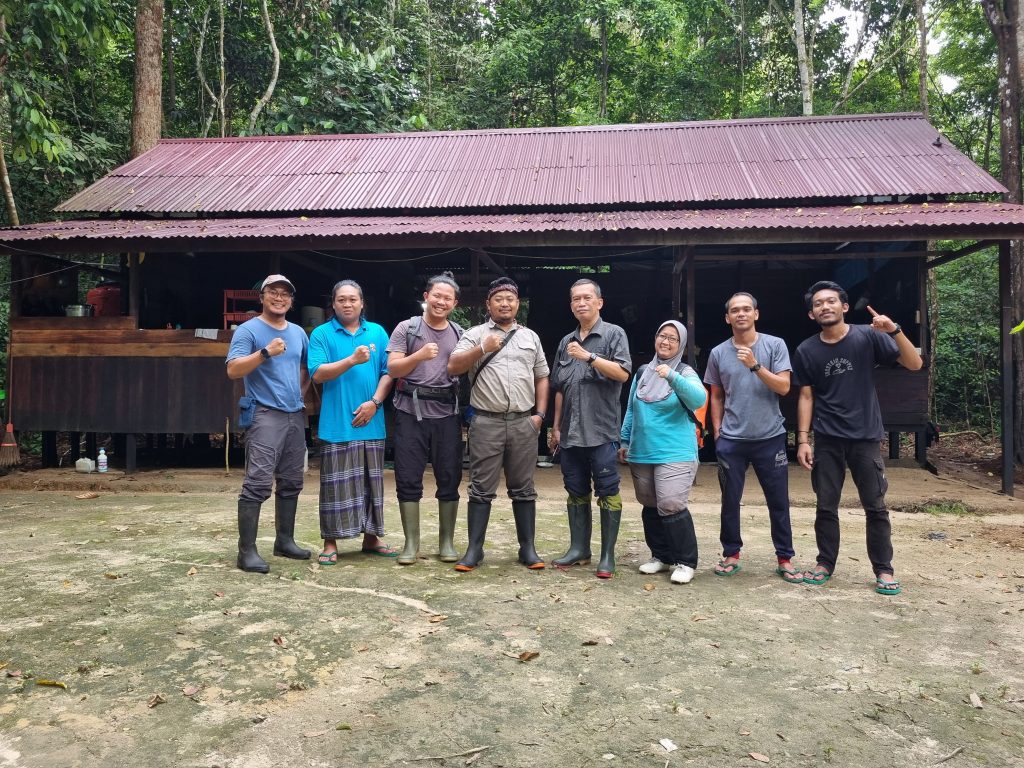
On the 4th day (12 Dec), our last day at Cabang Panti, we returned to Ketapang using the same boat as when we arrived. But our way down river was very smooth and only took 4 hours until our arrival in Semanjak village. In the evening, we held a meeting with Mr. Edi Rahman, the Director of Yayasan Palung. During the meeting, Mr. Edi and the Conservation Managers gave presentations about the activities that have been carried out by Yayasan Palung. We also discussed potential cooperative activities that can be done together in the future. Then we continued the discussions over dinner together.
From this trip, we were amazed by the enthusiasm of the researchers and research assistants at Cabang Panti Research Station and Rangkong Camp in Gunung Palung National Park. May this unique region of rich biodiversity always be conserved to continue to be a wealth of knowledge for us all.
Thank you to Mas Endro and the entire team at the Cabang Panti and Rangkong Research Stations as well as Mas Wahyu and the Yayasan Palung team who provided support and assistance during the trip. Thank you also to the team from Yayasan Palung in Ketapang for the discussion about the interesting programs. Our future cooperation on these programs will only strengthen the work and impact we can have.
